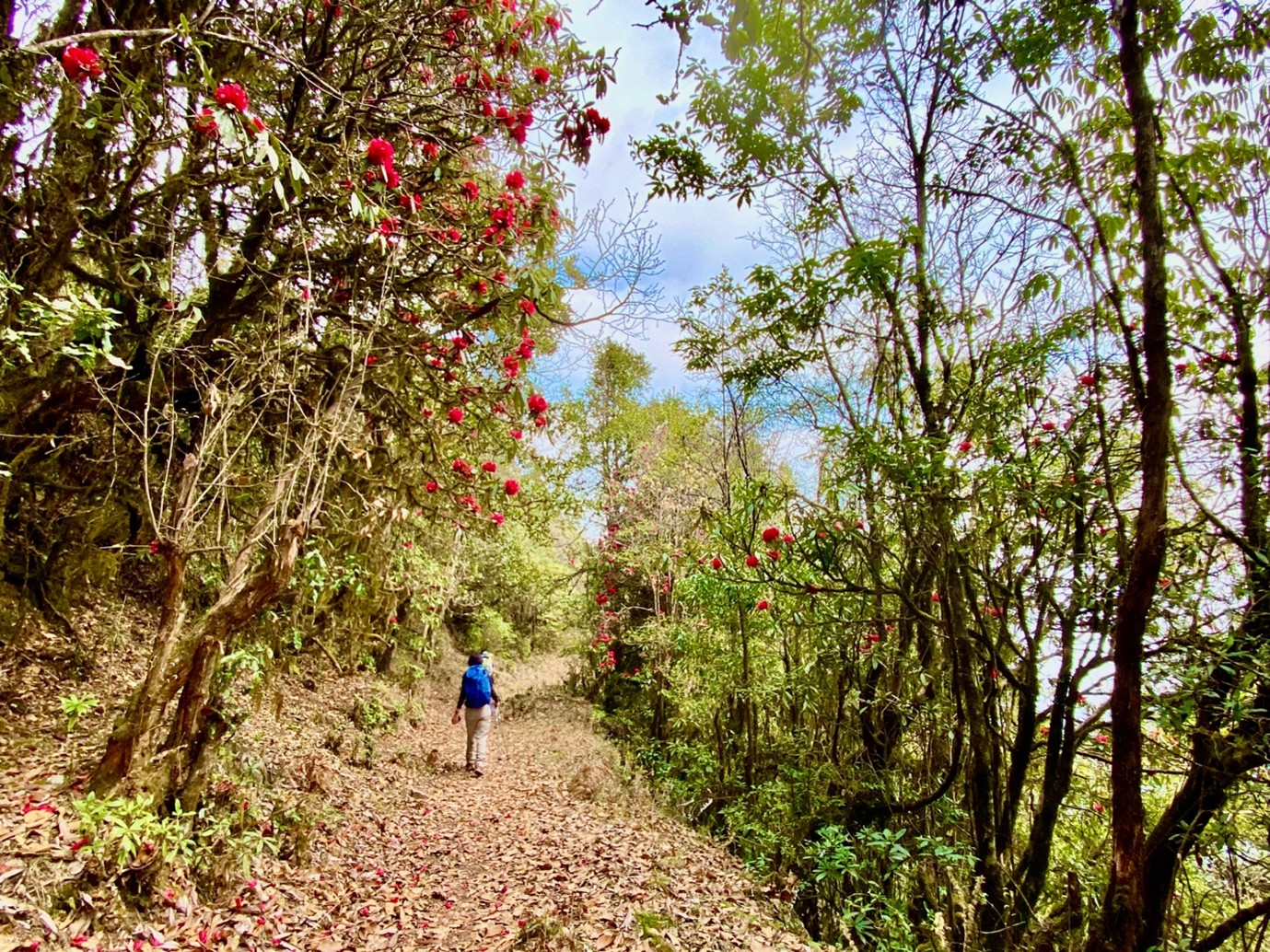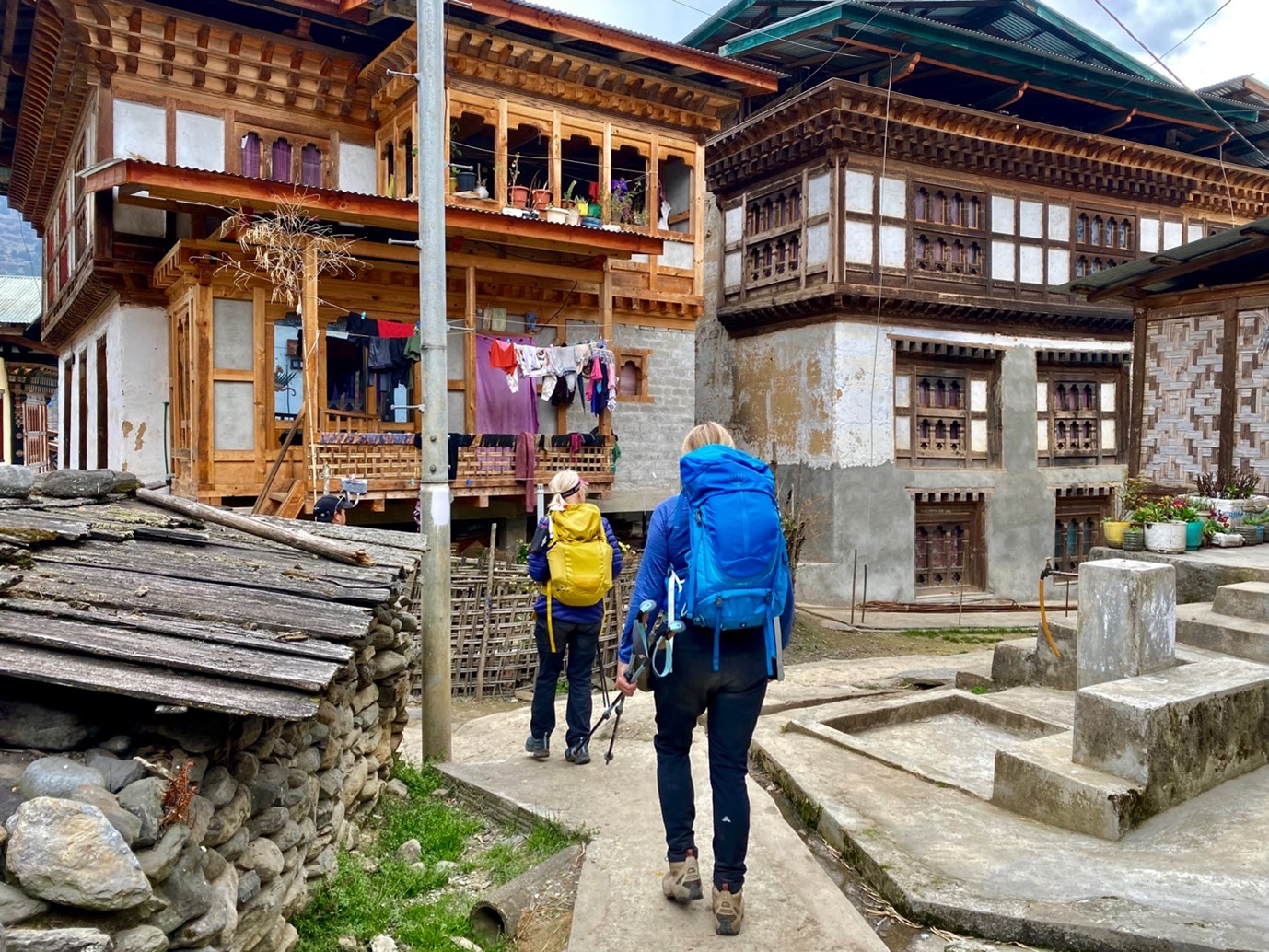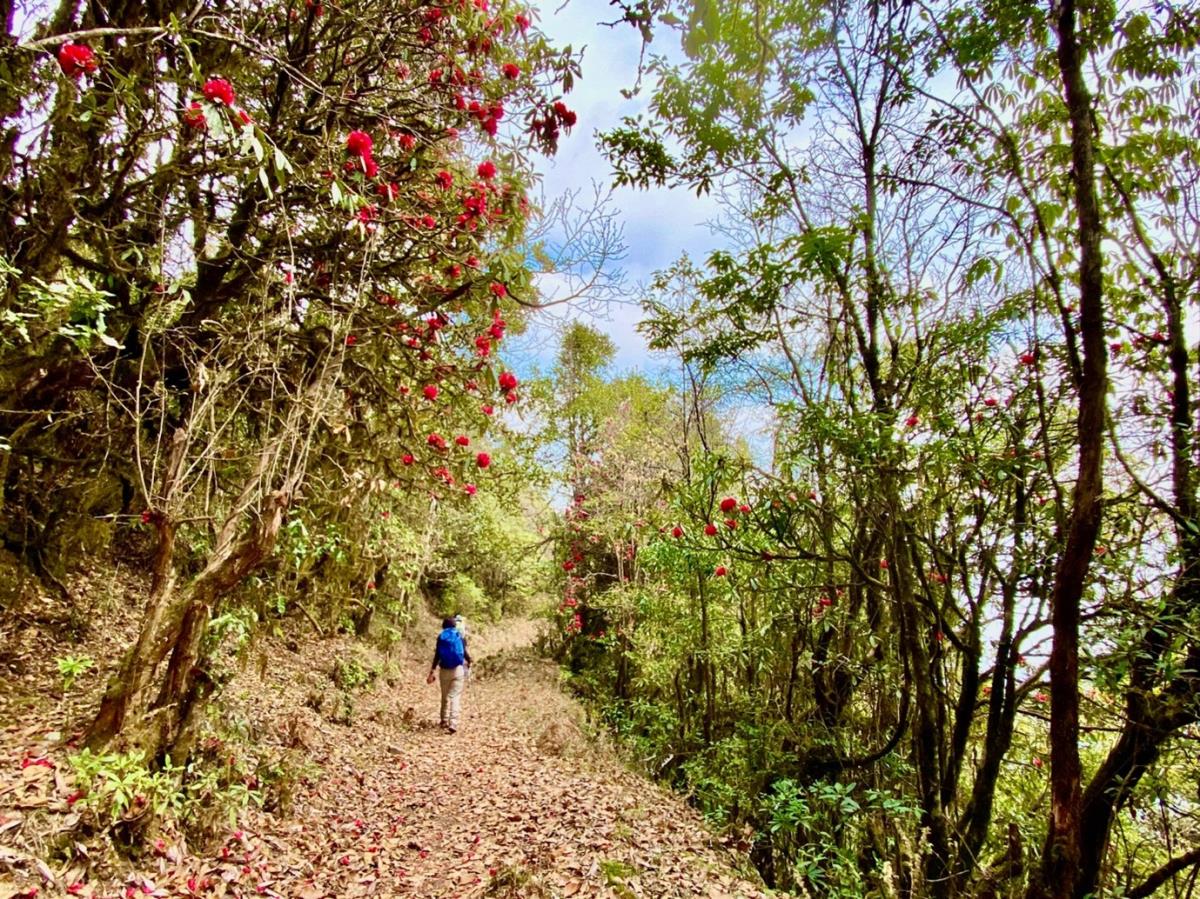The new Trans Bhutan Trail opened to the world in September 2022. It connects Bhutan’s ancient pathways into one 403-km long trail. New bridges have been built, as well as some shelters and toilets, and the trail has spiffy new interactive signs and an app.
It passes through beautiful forests of juniper, cypress, oak, rhododendron and pine, with some parts seemingly untouched by humans. It meanders through small villages and takes in some impressive temples and monasteries. The often-steep ascents and descents will ensure you never forget that you’re in the Himalayas.
Walking the full TBT takes 36 days and will set you back around $28,000. If you are short on time, you can cherry-pick the good bits. Some stunning, yet accessible, sections of the trail can be found in the west and centre of Bhutan and can be walked as day hikes. Here is a guide to some of the TBT highlights:
Thimphu: Pumola section. This is one tough hike, but the rewards are worth it. The views of the Thimphu Valley are superb. There’s also a small, pretty temple at the top. But, best of all, is an utterly delightful swing with a view. You won’t stop smiling.
Dochu La to Lumitsawa: Driving east from Thimphu, all travellers go over the Dochu La, Bhutan’s most scenic high pass. If the weather is clear, you can see most of the eastern Himalayas from here. Just down the road, the TBT descends through gorgeous forest to the tiny village of Lumitsawa. It’s especially beautiful in April, when the rhododendrons are out. If you’re feeling energetic you can keep on walking to Talo, or even all the way to Punakha.

Trongsa: Before reaching the town of Trongsa, there is a natural stopping place where there are excellent views of the dzong, Bhutan’s largest. Nearby, the TBT heads steeply down through rhododendron forest to reach the Mangde Chu, the river at the bottom of the gorge. The river is crossed by the new wooden bridge. From there, it is all up, all the way to the dzong, looking impressively enormous from below.
Bumthang: Bushman Trail. This section of the TBT starts above Chamkhar town, rising through pine forest to a small pass. From there it’s downhill to the village of Pemacholing, with its lovely nunnery. The trail continues to picturesque Mebartsho, the Burning Lake. Pema Lingpa, the famous treasure discover, is said to have jumped in the lake and emerged holding a chest, a scroll of paper and a butter lamp still burning.
Mongar: Nature Trail. After heading further east from Mongar town, you reach a small high pass, the Kori La, where the trail starts. There’s a huge range of trees on this walk, helpfully named by species on green signposts. It’s beautiful forest, again, and you’re likely to have the trail entirely to yourself. Finish at the tiny village of Ngatshang.
Pele La to Rukubji: This easy-grade downhill walk is a good blend of hiking and culture. For most of the trail, you can see the main road and the village of Longtey and there’s not much forest to speak of, but it’s a charming, changing landscape. There are meandering streams, open meadows and the odd rhododendron tree along this gentle, winding path. Rukubji village, the end point of the trail, is accessed by a stile. It’s a quaint, old-fashioned and traditional village with very modern concrete footpaths.


